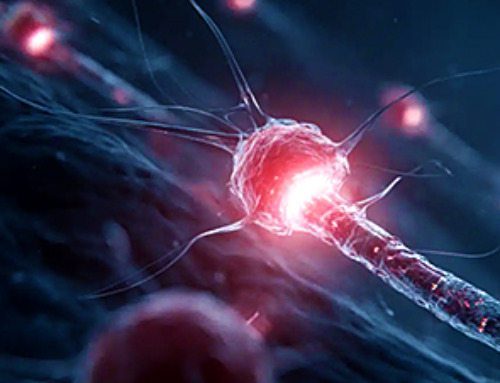| Using nanotechnology that enabled mRNA-based COVID-19 vaccines, a new approach to gene therapy may improve how physicians treat inherited forms of blindness. | |
| A collaborative team of researchers with Oregon Health & Science University and Oregon State University have developed an approach that uses lipid nanoparticles — tiny, lab-made balls of fat — to deliver strands of messenger ribonucleic acid, or mRNA, inside the eye. To treat blindness, the mRNA will be designed to create proteins that edit vision-harming gene mutations. | |
| In a study published in Science Advances (“Peptide-guided lipid nanoparticles deliver mRNA to the neural retina of rodents and nonhuman primates”), the team demonstrates how its lipid nanoparticle delivery system targets light-sensitive cells in the eye, called photoreceptors, in both mice and nonhuman primates. The system’s nanoparticles are coated with a peptide that the researchers identified as being attracted to photoreceptors. | |
| “Our peptide is like a zip code, and the lipid nanoparticles are similar to an envelope that sends gene therapy in the mail,” explained the study’s corresponding author, Gaurav Sahay, Ph.D., an associate professor in the OSU College of Pharmacy who also has a joint research appointment at the OHSU Casey Eye Institute. “The peptide ensures mRNA is precisely delivered to photoreceptors — cells that we haven’t been able to target with lipid nanoparticles until now.” | |
| “More than 250 genetic mutations have been linked to inherited retinal diseases, but only one has an approved gene therapy,” added study co-author Renee Ryals, Ph.D., an assistant professor of ophthalmology in the OHSU School of Medicine and a scientist at the OHSU Casey Eye Institute. “Improving the technologies used for gene therapy can provide more treatment options to prevent blindness. Our study’s findings show that lipid nanoparticles could help us do just that.” |
| In 2017, the Food and Drug Administration approved the first gene therapy to treat an inherited form of blindness. Many patients have experienced improved vision and have been spared blindness after receiving the therapy, which is sold under the brand name Luxturna. It uses a modified version of the adeno-associated virus, or AAV, to deliver gene-revising molecules. | |
| Today’s gene therapies largely rely on AAV, but it has some limitations. The virus is relatively small and can’t physically contain gene-editing machinery for some complex mutations. And AAV-based gene therapy can only deliver DNA, which results in the continual creation of gene-editing molecules that may lead to unintended genetic edits. | |
| Lipid nanoparticles are a promising alternative because they don’t have size constraints like AAV. Additionally, lipid nanoparticles can deliver mRNA, which only keeps gene-editing machinery active for a short period of time, so could prevent off-target edits. The potential of lipid nanoparticles was further proved by the success of mRNA-based COVID-19 vaccines, which also use lipid nanoparticles to deliver mRNA. They also were the first vaccines to be authorized for COVID-19 in the United States, thanks to the speed and volume at which they can be manufactured. | |
| In this study, Sahay, Ryals and colleagues demonstrated that a peptide-covered lipid nanoparticle shell can be directed toward photoreceptor cells in the retina, tissue in the back of the eye that enables sight. As a first proof of concept, mRNA with instructions to make green fluorescent protein was placed inside nanoparticles. | |
| After injecting this nanoparticle-based gene therapy model into the eyes of mice and nonhuman primates, the research team used a variety of imaging techniques to examine the treated eyes. The animals’ retinal tissue glowed green, illustrating that the lipid nanoparticle shell reached photoreceptors and that the mRNA it delivered successfully entered the retina and created green fluorescent protein. This research marks the first time that lipid nanoparticles are known to have targeted photoreceptors in a nonhuman primate. | |
| The scientists are currently working on follow-up research to quantify how much of the green fluorescent protein is expressed in animal retinal models. They’re also working to develop a therapy with mRNA that carries the code for gene-editing molecules. |
News
Drug-Coated Neural Implants Reduce Immune Rejection
Summary: A new study shows that coating neural prosthetic implants with the anti-inflammatory drug dexamethasone helps reduce the body’s immune response and scar tissue formation. This strategy enhances the long-term performance and stability of electrodes [...]
Scientists discover cancer-fighting bacteria that ‘soak up’ forever chemicals in the body
A family of healthy bacteria may help 'soak up' toxic forever chemicals in the body, warding off their cancerous effects. Forever chemicals, also known as PFAS (per- and polyfluoroalkyl substances), are toxic chemicals that [...]
Johns Hopkins Researchers Uncover a New Way To Kill Cancer Cells
A new study reveals that blocking ribosomal RNA production rewires cancer cell behavior and could help treat genetically unstable tumors. Researchers at the Johns Hopkins Kimmel Cancer Center and the Department of Radiation Oncology and Molecular [...]
AI matches doctors in mapping lung tumors for radiation therapy
In radiation therapy, precision can save lives. Oncologists must carefully map the size and location of a tumor before delivering high-dose radiation to destroy cancer cells while sparing healthy tissue. But this process, called [...]
Scientists Finally “See” Key Protein That Controls Inflammation
Researchers used advanced microscopy to uncover important protein structures. For the first time, two important protein structures in the human body are being visualized, thanks in part to cutting-edge technology at the University of [...]
AI tool detects 9 types of dementia from a single brain scan
Mayo Clinic researchers have developed a new artificial intelligence (AI) tool that helps clinicians identify brain activity patterns linked to nine types of dementia, including Alzheimer's disease, using a single, widely available scan—a transformative [...]
Is plastic packaging putting more than just food on your plate?
New research reveals that common food packaging and utensils can shed microscopic plastics into our food, prompting urgent calls for stricter testing and updated regulations to protect public health. Beyond microplastics: The analysis intentionally [...]
Aging Spreads Through the Bloodstream
Summary: New research reveals that aging isn’t just a local cellular process—it can spread throughout the body via the bloodstream. A redox-sensitive protein called ReHMGB1, secreted by senescent cells, was found to trigger aging features [...]
AI and nanomedicine find rare biomarkers for prostrate cancer and atherosclerosis
Imagine a stadium packed with 75,000 fans, all wearing green and white jerseys—except one person in a solid green shirt. Finding that person would be tough. That's how hard it is for scientists to [...]
Are Pesticides Breeding the Next Pandemic? Experts Warn of Fungal Superbugs
Fungicides used in agriculture have been linked to an increase in resistance to antifungal drugs in both humans and animals. Fungal infections are on the rise, and two UC Davis infectious disease experts, Dr. George Thompson [...]
Scientists Crack the 500-Million-Year-Old Code That Controls Your Immune System
A collaborative team from Penn Medicine and Penn Engineering has uncovered the mathematical principles behind a 500-million-year-old protein network that determines whether foreign materials are recognized as friend or foe. How does your body [...]
Team discovers how tiny parts of cells stay organized, new insights for blocking cancer growth
A team of international researchers led by scientists at City of Hope provides the most thorough account yet of an elusive target for cancer treatment. Published in Science Advances, the study suggests a complex signaling [...]
Nanomaterials in Ophthalmology: A Review
Eye diseases are becoming more common. In 2020, over 250 million people had mild vision problems, and 295 million experienced moderate to severe ocular conditions. In response, researchers are turning to nanotechnology and nanomaterials—tools that are transforming [...]
Natural Plant Extract Removes up to 90% of Microplastics From Water
Researchers found that natural polymers derived from okra and fenugreek are highly effective at removing microplastics from water. The same sticky substances that make okra slimy and give fenugreek its gel-like texture could help [...]
Instant coffee may damage your eyes, genetic study finds
A new genetic study shows that just one extra cup of instant coffee a day could significantly increase your risk of developing dry AMD, shedding fresh light on how our daily beverage choices may [...]
Nanoneedle patch offers painless alternative to traditional cancer biopsies
A patch containing tens of millions of microscopic nanoneedles could soon replace traditional biopsies, scientists have found. The patch offers a painless and less invasive alternative for millions of patients worldwide who undergo biopsies [...]





















